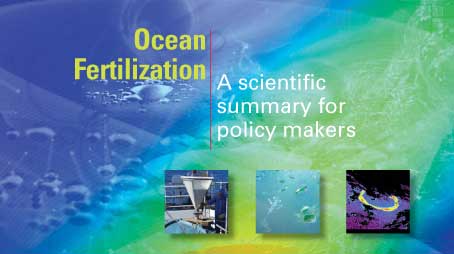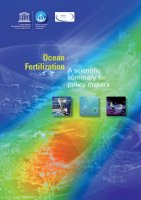| SEARCH |
-

Nov 17, 2015
Reflections on a three-decade legacy
The International Geosphere-Biosphere Programme (IGBP) will come to a close at t...
-
Nov 17, 2015
Use of and access to content on this website
Text and images produced by IGBP in house are free to use with appropriate credi...
-
Nov 12, 2015
Bella Gaia performance and panel discussion to mark IGBP's closure
A musical performance by Bella Gaia will celebrate the achievements and legacy o...
-

Towards Future Earth:
evolution or revolution?
During its three decades of existence, the International Geosphere-Biosphere Pro...
-
A personal note on IGBP and the social sciences
Humans are an integral component of the Earth system as conceptualised by IGBP. João Morais recalls key milestones in IGBP’s engagement with the social sciences and offers some words of advice for Future Earth.
-
IGBP and Earth observation:
a co-evolution
The iconic images of Earth beamed back by the earliest spacecraft helped to galvanise interest in our planet’s environment. The subsequent evolution and development of satellites for Earth observation has been intricately linked with that of IGBP and other global-change research programmes, write Jack Kaye and Cat Downy .
-
Deltas at risk
Around 500 million people worldwide live on deltas, but many of the world's deltas are sinking due ...
-
Climate change: the state of the science
A new data visualization released on the first day of the plenary negotiations at the UNFCCC’s clima...
-
Climate Change:
the State of the Science
Videos now online from the Stockholm public forum to mark the launch of the IPCC's climate report, 2...

Policy summary published on controversial geoengineering scheme, ocean fertilization
Geoengineering schemes involving ocean fertilization to affect climate have a low chance of success, according to the first summary for policymakers on the issue.

Ocean Fertilization: summary for policymakers
Failure to tackle rising greenhouse gas emissions effectively has led to intensifying debate on geoengineering - deliberate large-scale schemes to slow the rate at which Earth is heating up. The public debate often mixes opinion with fact so scientists have now released the first summary for policymakers on ocean fertilization, one of the earliest geoengineering proposals. The authors report that the chances of success of using ocean fertilization to deal with climate change is low.
Ocean fertilization involves adding iron or other nutrients to the surface of the ocean to trigger growth of microscopic marine plants. These plants use dissolved carbon dioxide to grow, which led to the idea that deliberate fertilization of the ocean on a large scale would remove carbon dioxide from the atmosphere.
Lead author of the report Professor Doug Wallace from the Leibniz-Institut für Meereswissenschaften (IFM-GEOMAR) says: "The published findings suggest that even very large-scale fertilization would remove only modest amounts of carbon dioxide from the atmosphere over 100 years".
For two decades, marine scientists have been carrying out a series of small-scale fertilization experiments to understand how ocean ecosystems respond to environmental change. However the experiments were not designed to address issues relating to geoengineering. Proposals to scale up this approach to slow climate warming or be included within emissions trading schemes to generate carbon credits have stimulated intense debate and criticism amongst scientists and the public.
The new summary, involving independent scientists from seven countries, explains the complexity of the underlying science and brings the detailed findings together in an accessible form for policymakers.
The summary notes that there are still major knowledge gaps. For example, it is unclear whether findings from small-scale experiments apply fully to larger scales. And a major concern is the possibility of large-scale fertilization having unintended consequences for ecosystems. The summary points out the extreme difficulty of assessing long-term effectiveness or unintended side effects.
"It's vastly more complex than assessing carbon storage in a forest" says Wallace "the carbon, and many of the potential impacts, are largely invisible and likely to be spread over vast distances".
Publication of the summary coincides with a symposium in California (La Jolla) on the ecosystem impacts of proposed geoengineering schemes and organized by the International Geosphere-Biosphere Programme. The one-day symposium, streamed live online, will bring together the world's leading experts in this area of research.
NOTES:
Ocean fertilization: a summary for policy makers
Published by: Intergovernmental Oceanographic Commission (IOC), which is part of UNESCO. Document prepared with the assistance of the Surface Ocean Lower Atmosphere Study (SOLAS), an international programme that focuses research effort on air-sea interactions and processes, sponsored by the International Geosphere-Biosphere Programme (IGBP), the Scientific Committee on Oceanic Research (SCOR), the World Climate Research Programme (WCRP) and the International Commission on Atmospheric Chemistry and Global Pollution (ICACGP).
The summary for policymakers is available here:
http://unesdoc.unesco.org/images/0019/001906/190674e.pdf
PUBLICATION CREDIT:
D.W.R. Wallace, C.S. Law, P.W. Boyd, Y. Collos,
P. Croot, K. Denman, P. Lam, U. Riebesell, S. Takeda &
P. Williamson; Ocean Fertilization. A Scientific Summary for Policy
Makers. IOC/UNESCO, Paris 2010. IOC Brochure 2010-2
Authors: Doug Wallace (IFM-GEOMAR, Germany), Cliff Law (NIWA, New Zealand), Philip Boyd (University of Otago, New Zealand), Yves Collos (CNRS Université Montpellier, France), Peter Croot (PML, UK), Ken Denman (Fisheries & Oceans, Canada), Phoebe Lam (WHOI, USA), Ulf Riebesell (IFM-GEOMAR, Germany), Shigenobu Takeda (Nagasaki University, Japan) and Phil Williamson (NERC, UK).
Geoengineering symposium, 31 January 2011
IGBP holds a symposium on the ecosystem impacts of geoengineering on 31 January, 8:30am-8:30pm, at the Scripps Institution of Oceanography, California. The symposium can be watched live online.
See http://aerosol.ucsd.edu/IGBPworkshop for more details.
More information
Owen Gaffney
Director of communications
International Geosphere-Biosphere Programme
Email: owen.gaffney@igbp.kva.se
Tel: +46 86739556
Mob: +46 730208418
Skype: owengaffneyigbp
Phil Williamson
School of Environmental Sciences
University of East Anglia
Norwich NR4 7TJ
Email:p.williamson@uea.ac.uk
Tel: +44 (0)1603 593111
Mob: +44 (0)7749 092 287
Douglas Wallace
Chemische Ozeanographie
FB Marine Biogeochemie
Leibniz-Institut für Meereswissenschaften (IFM-GEOMAR)
Germany
Email: dwallace@ifm-geomar.de
Tel. 49-(0)431-600-4200 (4201)

IGBP closed at the end of 2015. This website is no longer updated.
-

Global Change Magazine No. 84
This final issue of the magazine takes stock of IGBP’s scientific and institutional accomplishments as well as its contributions to policy and capacity building. It features interviews of several past...
-

Global Change Magazine No. 83
This issue features a special section on carbon. You can read about peak greenhouse-gas emissions in China, the mitigation of black carbon emissions and the effect of the 2010-2011 La Niña event on gl...
-
INTERGOVERNMENTAL PANEL ON CLIMATE CHANGE:
How green is my future?
UN panel foresees big growth in renewable energy, but policies will dictate just how big.
-
UK:
'The Anthropocene: a new epoch of geological time?'
Royal Society, Philosphical Transactions A





















